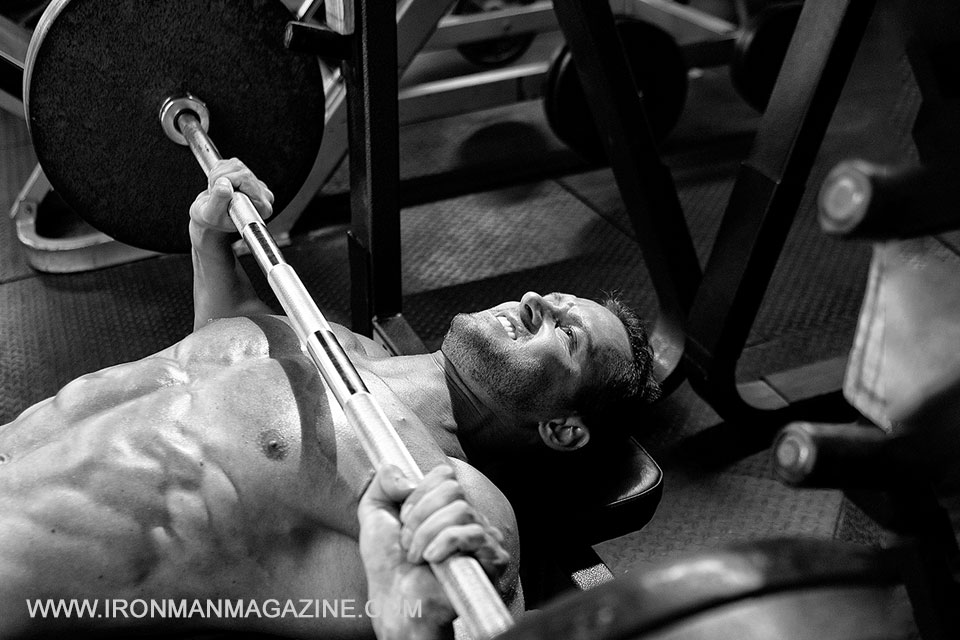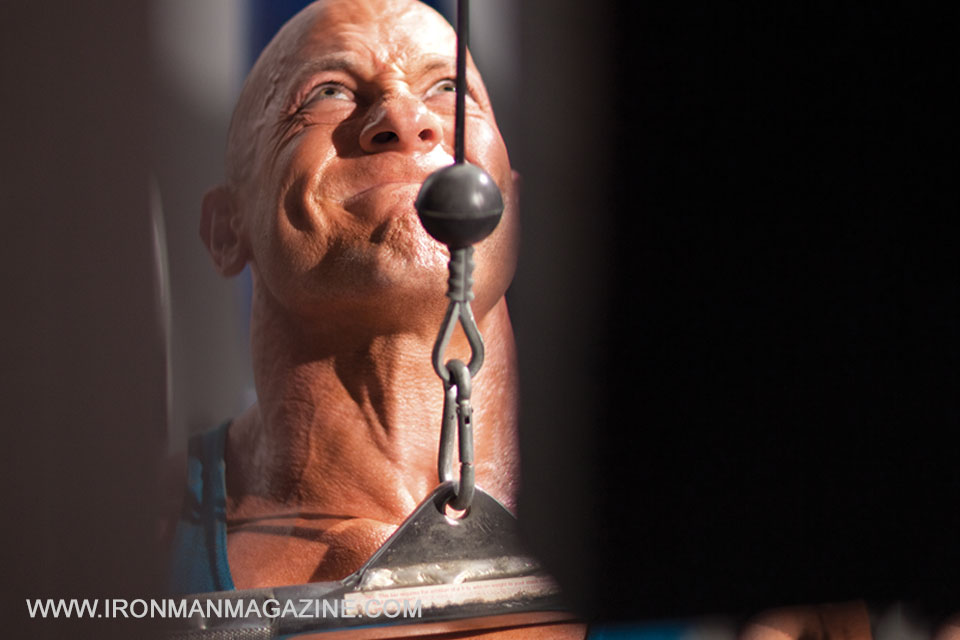


Last month I described a beginning program for the light, heavy and medium system. After athletes have been doing it for six to eight weeks, they’re ready to start adding exercises. If they have applied themselves, they will have improved their technique on the three basic movements—the bench press, power clean and back squat—and established solid strength in the process. During that time the disparity between the heavy, light and medium days is marked and for a good reason. One heavy day is sufficient per week. The other two days are opportunities to hone your form on the three lifts and rest the muscles and attachments after this new form of stress.
Of the three days of the system it’s usually the light day that is abused the most frequently. Many beginners, anxious to make fast gains, cannot understand why they can’t use more weight on this day. I tell them that it will change soon, but for the time being they need to learn how to concentrate on doing every rep perfectly. What they learn in the way of technique now will carry over for many years. I remind them that practice does not make perfect; practice makes permanent. Only perfect practice makes perfect. Get the technique down perfectly, and the gains will come.
For those who complain that the light day is too easy, I make some changes. I have them go through the program at a very fast pace, and if there is ample equipment available, I set up a three-station circuit and have them move through the circuits quickly. They can do the fast workouts in 20 minutes. When they finish, they are no longer grumbling about the session being too easy. If their form starts to falter, I have them slow down.
I mentioned last month that many beginners abuse the light day concept by slipping in auxiliary exercises after they have done the Big Three—always for the arms and chest. Small-muscle exercises can wait. You should put all the energy into the three primary lifts. Another way athletes corrupt the light day is to add reps to the three lifts. Instead of doing just five reps, they do twice that number. I spotted a freshman football player knocking out 10 reps on his final set of squats. When I asked him why he wasn’t following the program I gave him, he replied that five reps with 195 was just too easy. I explained that by doing double reps, he had done more work on the squat than he had on his heavy day.
Actually, at that stage of development it really doesn’t matter that much. What does matter is maintaining the discipline to stick with the program, because everything you do at each of the three workouts during the week has a direct influence on the others, and it’s a bad habit to pick up and start freelancing in the early stages of strength training.
Once athletes begin using good form and making improvement on the three primary lifts, I start adding exercises. That changes the complexity of the heavy, light and medium system. No longer are the numbers used on the light and medium days based on what was done on the heavy day. Rather, they are based on what exercises fit into the system on the three days. Basically, the primary exercises for the three major muscle groups—shoulder girdle, back, and hips and legs—that you do on the heavy day are the ones on which you handle the most weight. The moves you do on the light day are those on which you handle the least weight, and the medium day is in between. Yet that’s not carved in stone.
The three back exercises I insert into the program are power cleans, good mornings and shrugs. Even though the amount of weight used for the shrugs is considerably higher than for the other two exercises, I still put them on Friday, the medium day—for two reasons. One, although you can shrug a lot of weight, the exercise is not as demanding as the other two lifts in terms of actual energy expenditure because it’s a short-stoke movement. Two, when you do it, your traps are going to be sore to the touch, and as large muscles they need the two days of rest to recover.
Now the light day is no longer an easy workout, mostly due to good mornings. They are never easy. The shoulder girdle exercise that I use is overhead presses, and since I push my athletes to add to the last set every week, they aren’t easy when done together. The squat workout is less demanding than on the heavy and light days, but it needs to be because the other two squat sessions are very tough.
On the light squat day the athletes do five sets of five, finishing with 50 pounds less than their best squat for five. That works okay until they reach 400×5, and then I limit them to using just 315 for three sets of five. I want the workload to be relatively low because of the two hard squat days, yet I don’t want to make it so easy that they don’t have to pay attention. What I do is have them do two warmup sets, 135 and 225, and then jump right to the work weight of 315 and do three sets. After they’re comfortable with that, I throw in a twist. I have them do the three work sets using different foot placements—regular stance; feet wide apart, as in Sumo-style squats; and, finally, with their feet close together. How close? Eventually the heels should be touching. This is an effective way to involve all the groups responsible for squatting, and it helps maintain balance in all the muscles and attachments.
On the heavy squat day they do five sets of five to limit. On Friday they do three sets of five, followed by two sets of three, and the final triple should be more than the final set on the heavy day. You may be thinking, but that makes Friday a heavier workout than Monday. In intensity, yes. In workload, no. It fits, as the Wednesday session is lighter and the athletes have two days to recover.
My upgraded program looks like this: Heavy day: back squats, power cleans and bench presses, all done for five sets of five reps and pushed to limit. Light day: back squats for five sets of five using 50 pounds less than what was handled at the heavy workout; good mornings, alternating four sets of 10 with five sets of eight; overhead presses for three sets of five plus three sets of three. Medium day: back squats for three sets of five and then two sets of three; incline-bench presses for five sets of five and shrugs for five sets of five. As with the heavy day, all lifts are to max.
After they have been doing this for a couple of weeks, I add in back-off sets for all shoulder girdle exercises and for the squats on the heavy day. I wait a few more weeks, when the athletes are ready to handle extra work, before including a back-off set for the Friday workout. I do not include back-off sets for any of the back exercises. If athletes go all out on the power cleans, good mornings, and shrugs, they are inviting problems to put more work on those fatigued muscles. There are other ways to increase the workload on the back.
Do back-off sets for eight or 10 reps. If you do fewer reps, use a bit more weight. One set is sufficient, and they are not that difficult because, while you’ve handled much more, they add very nicely to the overall volume, and that’s one of the keys to making steady progress in strength training.
At the same time that I add the back-off sets, I also have my athletes start doing auxiliary exercises at the end of each workout. Heavy day: incline dumbbell presses for two sets of 20. Light day: alternate chins with dips, using no weight, for two sets of as many as you can do. Medium day: straight-arm pullovers for two sets of 20. Eventually, the ancillary movements are determined by an athlete’s individual needs. If the adductors are lagging, they do additional work on the adductor machine both before and after the workout. An obvious weakness in the lower back will have them doing hyperextensions prior to every weight session.
Next time I’ll go over how advanced strength athletes can use the heavy, light and medium system, including adding a fourth day of training and dealing with multiple sessions on the same day. Getting stronger is a never-ending process of gently pushing the volume of work and the intensity higher and higher without becoming overtrained. Using the heavy, light and medium system sensibly enables you to do just that.
Editor’s note: Bill Starr was a strength and conditioning coach at Johns Hopkins University from 1989 to 2000. He’s the author of The Strongest Shall Survive—Strength Training for Football, which is available for $20 plus shipping from Home Gym Warehouse. Call (800) 447-0008, or visit www.Home-Gym.com. IM






















You must be logged in to post a comment Login